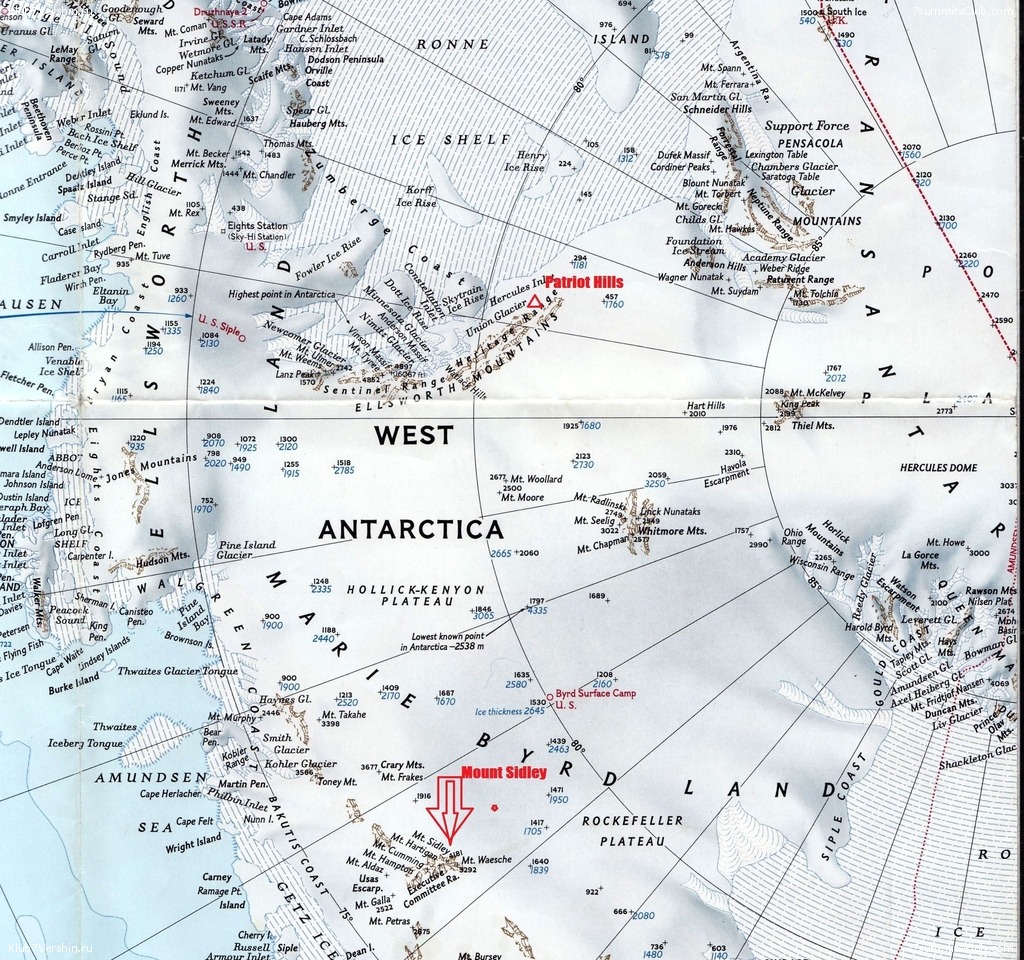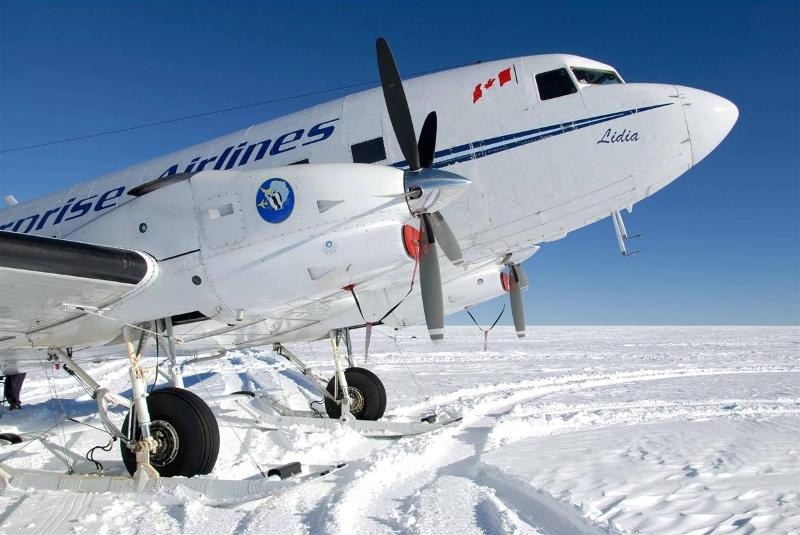All news: 22 January 2011
Our programs in Antarctica resumed, a climb of Mount Sidley begins!
Vinson.
At last, January 21 IL-76 aircraft flew from the Chilean city of Punta Arenas to Antarctica to the base Union Glacier, where a group of 70 people waited for him for very long time. Alex Abramov – from 5th of January, After the strike ...
At last, January 21 IL-76 aircraft flew from the Chilean city of Punta Arenas to Antarctica to the base Union Glacier, where a group of 70 people waited for him for very long time. Alex Abramov – from 5th of January, After the strike and damage of aircraft, flight was delayed because of bad weather. Not all could waited for this day. Under the plan the aircraft should fly on the Ice Continent on January 10. Many were forced to leave. Our climbers Vadim Nadvodnyuk, Nikolai Stepanenko and Mikhail Turovsky waited for this day, and now they start climbing program on Mount Vinson, the highest point in Antarctica. They will climb it under the leadership of Maxim Bogatyrev, who guarded the base camp from January, 5! But most important news: our climb on the highest volcano of the continent - Mount Sidley began. A few hours after arrival Ilyushin, Twin Otter was launched in the direction of this remote volcano. The group consist of Alex Abramov, Crina (Coco) Popescu and Mario Trimeri, as well as representatives of ALE, Mike Sharp and guide Scott Woolams. The ascent began immediately upon landing the aircraft. Mountaineers put on skis and headed towards the summit. According to Alex information, they should rise to a height of 2 kilometers with travel a distance of 12 kilometers.
Well, good luck to all !
Mount Sidley (4181 m) – the highest point of the Mary Bird Land, in very rarely visited area. It is officially recognized as the highest volcano of Antarctica, one of the “Seven volcanos of the World”. Mt.Sidley - a large mountain, with a huge caldera, which forms a wall height of 1200 meters, the opposite slopes of the mountains are flat and could easily be reached on skis. A layer of ice in the area reaches is a three-kilometer thick. There is no actual volcanic activity in the region, according to scientists last eruption occurred about 4.7 million years ago.




